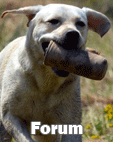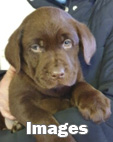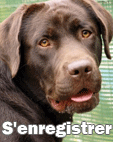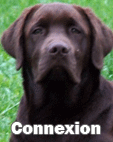Bruno
Admin

Nombre de messages : 11657
Age : 57
Affixe (réservé aux éleveurs) : du Plateau Verdoyant
Prénom : Bruno
Mes chiens : Jackpot du Plateau Verdoyant, Happy du Plateau Verdoyant, Harley du Plateau Verdoyant, First Lady du Plateau Verdoyant, Candy de Chantemelse et Vulcain
Date d'inscription : 13/10/2008
 |  Sujet: Histoire du lab... Livre de Peter Hawker Sujet: Histoire du lab... Livre de Peter Hawker  Jeu 19 Aoû 2010 - 16:05 Jeu 19 Aoû 2010 - 16:05 | |
| Si vous vous intéressez à l'histoire du lab, vous aurez sûrement déjà vu des extraits de ce texte du Colonel Peter Hawker décrivant les chiens de Terre-Neuve de l'époque dont le St John's, ancêtre de notre Labrador... Je vous donne ici le chapitre original et intégral (NEWFOUNDLAND DOGS.) de son livre (réédition de 1854). Ainsi qu'une illustration de son livre montrant un chien au travail à l'eau. Je vous rappelle que vous avez des outils linguistiques en haut de la page d'entrée du forum qui pourront vous aider à traduire.  Instructions to young sportsmen in all that relates to guns and shooting... Instructions to young sportsmen in all that relates to guns and shooting... Par Peter Hawker
NEWFOUNDLAND DOGS.
Here we are a little in the dark. Every canine brute that is nearly as big as a jackass, and as hairy as a bear, is denominated a fine Newfoundland dog. Very different, however, are both the proper Labrador and St. John's breed of these animals; at least, many characteristic points distinguish them.
The one is very large; strong in the limbs; rough haired ; small in the head; and carries his tail very high. He is kept in that country for drawing sledges full of wood, from inland to the sea-shore, where he is also very useful, by his immense strength and sagacity, among wrecks, and other disasters in boisterous weather.
The other, by far the best for every kind of shooting, is oftener black than of another colour, and scarcely bigger than a pointer. He is made rather long in the head and nose; pretty deep in the chest; very fine in the legs, has short or smooth hair; does not carry his tail so much curled as the other; and is extremely quick and active in running, swimming, or fighting.
Newfoundland dogs are so expert and savage, when fighting, that they generally contrive to seize some vital part, and often do a serious injury to their antagonist. I should, therefore, mention, that the only way to get them immediately off is to put a rope, or handkerchief round their necks, and keep tightening it, by which means their breath will be held, and they will instantly be choked from their hold.
The St. John's breed of these dogs is chiefly used on their native coast by fishermen. Their sense of smelling is scarcely to be credited. Their discrimination of scent, in following a wounded pheasant through a whole covert full of game, or a pinioned wild fowl through a furze brake, or warren of rabbits, appears almost incredible. (It may, perhaps, be unnecessary to observe, that rabbits are generally very plentiful, and thrive exceedingly near the sea-shore. It therefore, often happens, that wigeon, as they fly, and are shot by night, fall among furze brakes, which are full of rabbits.) •
The real Newfoundland dog may be broken in to any kind of shooting; and without additional instruction, is generally under such command, that he may be safely kept in, if required to be taken out with pointers. For finding wounded game, of every description, there is not his equal in the canine race; and he is a sine qua non in the general pursuit of wildfowl.
Poole was, till of late years, the best place to buy Newfoundland dogs; either just imported, or broken in; but now they are become much more scarce, owing (the sailors observe) to the strictness of " those the taxgatherers." I should always recommend buying these dogs ready broken; as, by the cruel process of half starving them, the fowlers teach them almost everything ; and by the time they are well trained, the chances are, that they have got over the distemper, with which this species, in particular, is sometimes affected beyond recovery.
If you want to make a Newfoundland dog do what you wish, you must encourage him, and use gentle means, or he will turn sulky; but to deter him from any fault, you may rate or beat him.
I have tried poodles, but always found them inferior in strength, scent, and courage. They are also very apt to be sea-sick. The Portland dogs are superior to them.
A water-dog should not be allowed to jump out of a boat, unless ordered so to do, as it is not always required; and, therefore, needless that he should wet himself, and everything about him, without necessity.
For a punt, or canoe, always make choice of the smallest Newfoundland dog that you can procure; as the smaller he is, the less water he.brings into your boat after being sent out; the less cumbersome he is when afloat; and the quicker he can pursue crippled birds upon the mud. A bitch is always to be preferred to a dog in frosty weather, from being, by nature, less obstructed in landing on the ice.
If, on the other hand, you want a Newfoundland dog only as a retriever for covert shooting, then the case becomes different; as here you require a strong animal, that will easily trot through the young wood and high grass with a large hare or pheasant in his mouth.*
* Since the publication of the last edition, Lt.-Col. Hutchinson's valuable work on " Dog-breaking" has appeared ; it is a perfect vade mecum for both sportsman and keeper, and I have great pleasure in giving a cordial welcome to a work which so ably supplies my own deficiencies on the subject.[Vous devez être inscrit et connecté pour voir cette image] |
|





